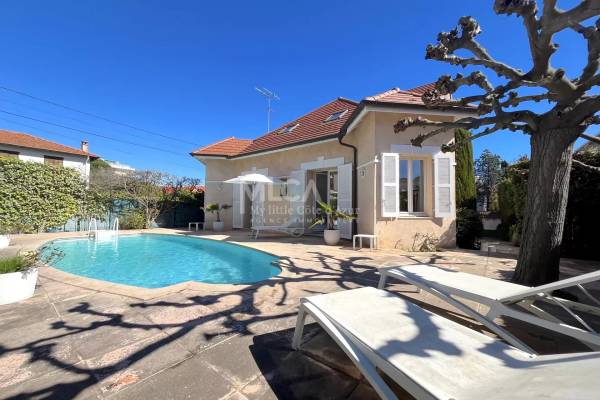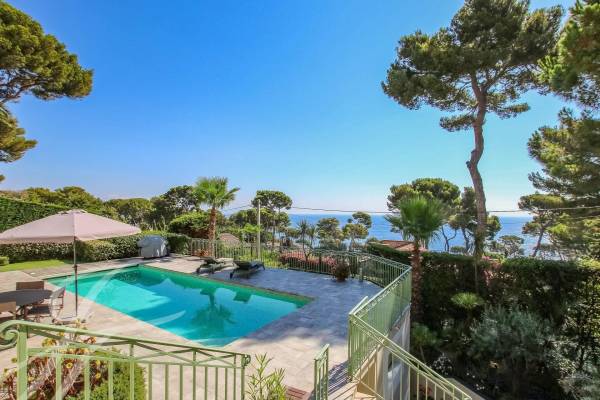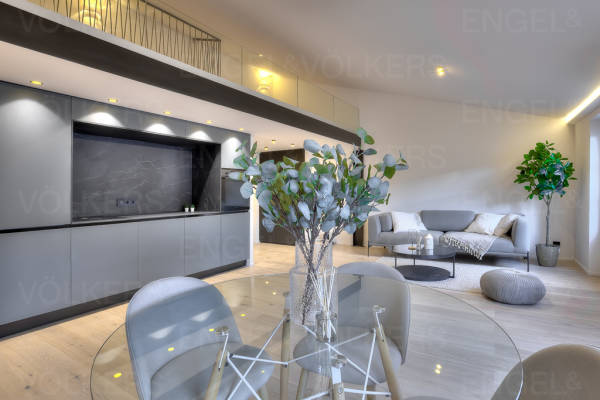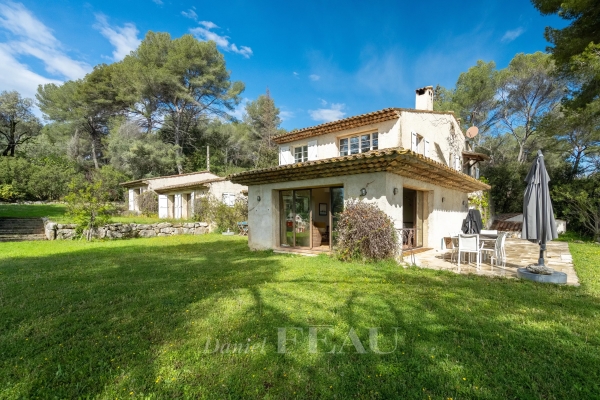On the subject of wine
Generous, cordial, wine plays a vital part in creating a convivial ambiance.
Cheery, generous, cordial, wine brings people together and plays
a vital part in creating a convivial atmosphere. An important
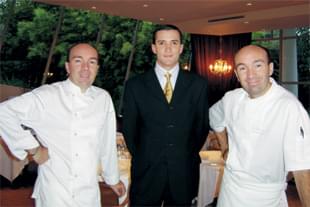
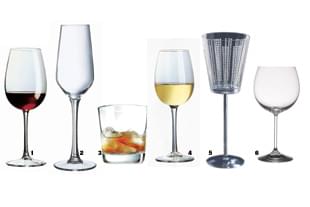
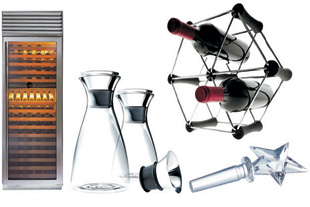
“guest” in the land of Epicurians…
Only the skin of a grape has colouring capabilities. So the moral is : you can make white wine from black grapes… with white juice. To make white wine, the vintner can thus choose one of two methods. The first consists of using white grapes only. The second, using a red “cépage”, involves getting rid of the skin and seeds. As soon as the grapes arrive at the winery, they are pressed without being stripped from the stems. The juice is poured into filtering recipients. Pressed grape “must” (ie. juice in the process of fermenting) is added to decanted “must”. This clear juice is then poured into vats (preferably made of oak) where they produce the necessary tannin. During the fermentation period, the vintner maintains a temperature of approximately 18°C for two to three weeks. In the final phase, the wine is decanted then bottled. While red wine keeps longer than white, the latter offers a broader range of characteristics. It can be dry, very dry, slightly dry, mellow, sparkling, fizzy, with a slight taste of liquorice… and should be served between 8 and 10°C. Absolutely essential : the label must be clearly readable, as it is part of the art and contains a wealth of information.
From black to red
No hesitation here, red wine comes from black grapes. Vinification starts with the picking and crushing of the grapes, which are then placed in fermentation vats, either oak tuns or stainless steel vats. Depending on the “brew” required, fermentation will be more or less long, from four to ten days. The vintner assists the work accomplished by the natural yeasts in the grapes themselves by maintaining a temperature of 25-30°C. Lower than that, the wine would lack body ; above it, it would be too tannic. “Maceration” is the phase during which the tannic elements and the colour from the grape-skin are diffused into the fermented juice. And here, complex and highly personal operations then enable the vintner to give full rein to his talent : dissolution, extraction, excretion, diffusion, decoction, infusion… A wine to be kept for a long time requires rich tannin content : its maceration can last as long as several weeks. On the other hand, a new or early wine (“primeur”) is more supple and will undergo a much shorter maceration period. When the wine is drawn off, the “vin de goutte” is separated from the marc, which will be pressed in order to extract the “pressed wine” (which may, or may not, be mixed with the “vin de goutte”). Before stabilization, malolactic fermentation is obtained in a vat, at a temperature of 18-20°C, over a period of about 20 days. Finally, the wine is again clarified, then poured into vats where it will be able to stabilize in peace and quiet. It should be served at a temperature of 18-20°C. If it’s a mature wine, it deserves to be decanted.
Wrongly considered as the poor relation in the wine family, rosé is not made by blending red and white wines. Originally obtained from red grapes, it is made by adopting one of three methods, depending on whether it will be grey or pale rose, rose or dark rose. For the first, the grapes are crushed immediately and the juice only stays a few hours (at most) in contact with the skin. The must will thus be only slightly coloured. Fermentation is the same as for white wines. For a rose-coloured wine, the vintner transfers the precious liquid obtained from the press to the ferment-ation vat. As soon as he is satisfied with the hue obtained, he removes the wine from the vat. It then goes into another vat to continue fermentation. The operation which enables the vintner to obtain a deeper shade of colour is called “la saignée” (bleeding or tapping) : during the fermentation stage, the producer draws off a certain quantity of juice from the vat every hour. This is how he obtains “rosés de Provence”. To be consumed chilled, between 8 and 10°C.
Aperitif time
For drinks with friends, what could be better than champagne ? Other options do, however, exist. Whisky and port are good alternatives. For an old vintage, decanting is advisable. Rum is synonymous with tradition, the art of hospitality and formal entertaining. There are various kinds : traditional, agricultural, distilled from cane-sugar, maple syrup, distilled from molasses, old rum (which has aged for three years in oak tuns), straw rum (which only stays a few months in the vat), amber rum (which has had caramel added to it), grand aroma rum and, finally, light rum, usually used for making punch. To be consumed, of course, in moderation.
Further reading
Le Guide Hachette des Vins 2004, 29.15 €. La Cote des Grands Vins de France 2004, Hachette, 30.30 €. Petit Larousse des Vins, 14.30 €. Larousse des Vins du Monde, 39.50 €. Les Vins Rouges, Série Vinotéca, Editions Fleurus, 8.65 €. Les Vins Blancs, Série Vinotéca, Editions Fleurus, 8.65 €. Les Vins de Champagne, Série Vinotéca, Editions Fleurus, 8.65 €.
By Cécile Olivéro - photos : press.
